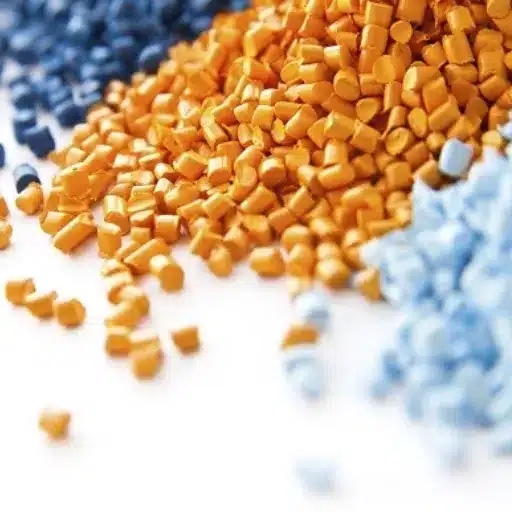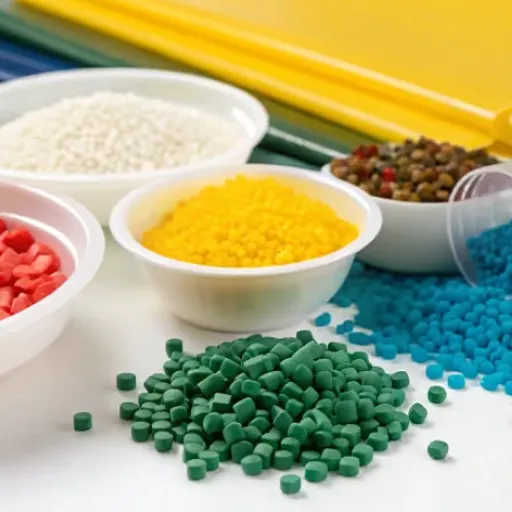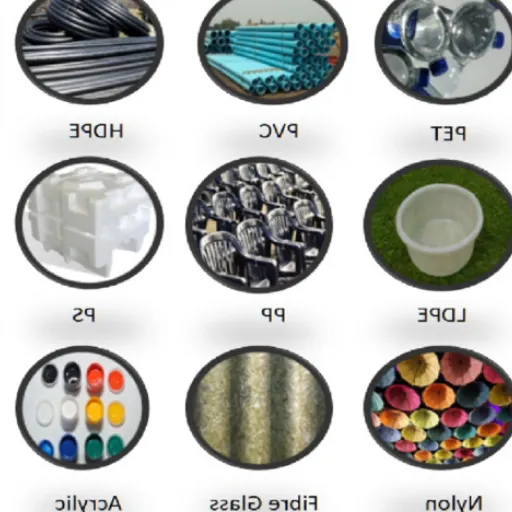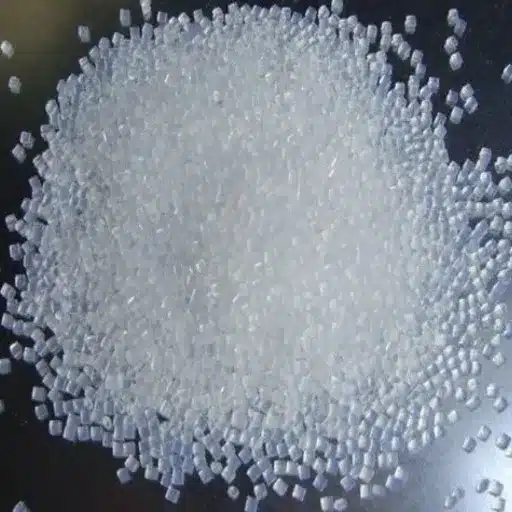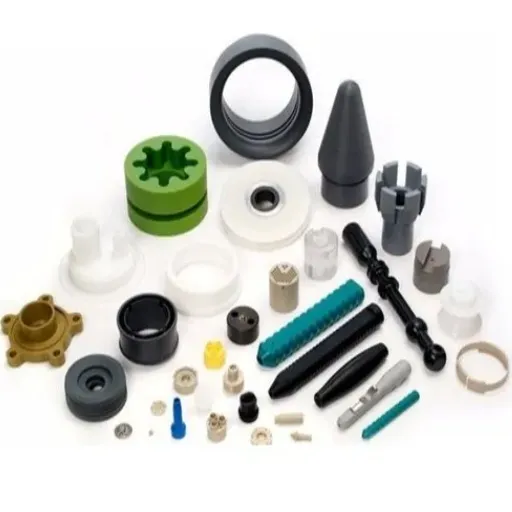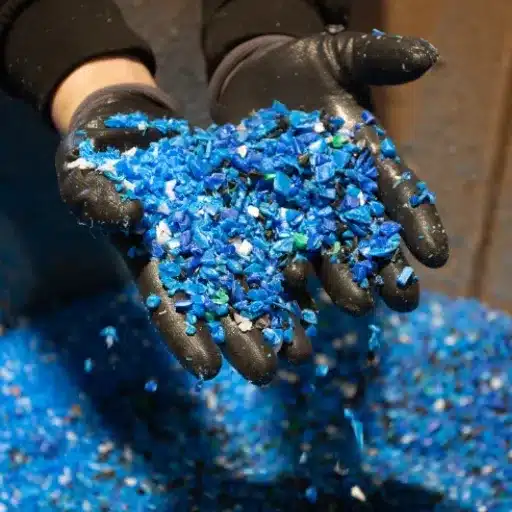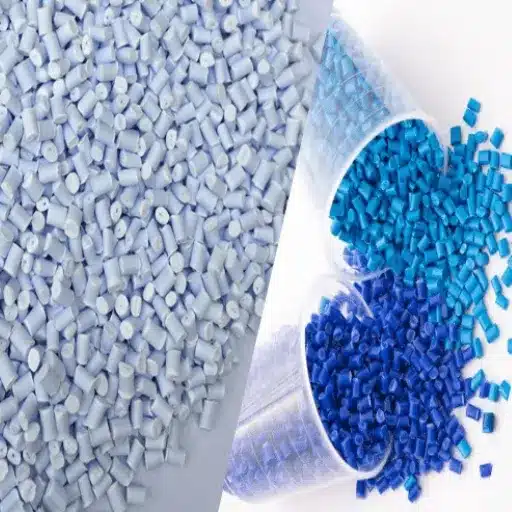Plastics have hugely influenced modern life, providing support for various industrial operations and everyday applications. From high-performance automotive components to lightweight, tough household items, they are versatile and strong, are indispensable. But some plastics are two different things: they stand out for their complex resilience, impact resistance, and capability to withstand extremely harsh conditions. Therefore, it is presented here with a detailed examination of some of the strongest plastics, which can effectively tackle industrial challenges and meet day-to-day requirements. So, whichever way—from durability to price to sustainability—those strong plastics offer you or your company the information required to make an informed decision. Get ready for two tours: one into the world of material science innovations, and another into the reacquaintance with strong plastics that technically drive advances in many fields.
Understanding Strong Plastic Materials
What Do We Mean by Strong Plastic?
Such plastics are synthetic polymer materials engineered to withstand extremely high stress, pressure, or environmental conditions while maintaining their structural integrity. Hence, these plastics exhibit strong mechanical properties, including tensile strength, impact strength, and durability. They include polycarbonate (PC), high-density polyethylene (HDPE), and acrylonitrile butadiene styrene (ABS), among others, depending on the application.
For example, polycarbonate finds application in safety glasses and protective gear, since it exhibits performance in impact resistance. High tensile strength verifies HDPE as being suitable for containers, piping, and heavy-duty applications. ABS is prized in the consumer product and electronic markets for its combination of toughness and flexibility.
These days, stronger plastics find applications in engineering industries such as automotive, aerospace, construction, and consumer goods, serving as lighter alternatives to metals and offering better sustainability options through recycling. Recent advancements in material science, however, focus on optimizing strength-to-weight ratio, heat resistance, and environmentally friendly formulations to address contemporary requirements.
Characteristics of Impact-Resistant Plastic
Impact-resistant plastics are those materials that resist cracking, breaking, or deformation when subjected to a sufficiently significant force. These materials commonly boast very high tensile strength, along with exceptional durability, and are therefore suitable for stringent applications. For example, some widely used materials include ABS and polycarbonate due to their excellent mechanical properties.
Typically, plastics in this category are labeled as impact-resistant, with testing that may include the Izod or Charpy impact resistance tests, which measure their capacity to absorb sudden shocks or impacts. Historically, these have exhibited good temperature stability, performing satisfactorily under a wide range of temperatures, from extremely cold to extremely hot.
Still, the addition of reinforcements or additives such as glass fibers may increase their impact strength and flexibility. Additionally, modern polymer-chemical research is developing hybrids from a performance standpoint, as well as sustainable alternatives, such as hybrid plastics with a partly bio-based or recycled matrix. Such technologies serve to enhance durability and meet global initiatives aimed at reducing ecological footprints.
The Common Areas of Use of Strong Plastics
Strong plastics play a crucial role across various industries, owing to their versatility, durability, and adaptability. One of their most important uses is in the automotive sector, where low-weight and high-strength plastics are used to reduce the weight of the vehicle so that it may use less fuel and cause less pollution. Materials such as bumpers, dashboards, and fuel tanks are made from these advanced polymer composites, allowing for enhanced impact resistance and greater design freedom.
Another primary domain of application is in aerospace engineering, where strong plastics, such as carbon fiber-reinforced polymers, are used to fabricate lightweight yet robust structures for aircraft. Thus, the structures provide fuel efficiency, upholding structural integrity in-flight, thereby guaranteeing passenger safety.
The construction industry utilizes high-strength plastics in pipes, insulation, and fittings. Materials like polyvinyl chloride (PVC) are valued for their resistance to weathering and for their long lifespan, making them suitable candidates for plumbing and exterior applications.
The medical field has advanced strong plastics. Strong plastics—from prosthetics and implants to medical devices and packaging—are used for safety, sterility, and reliability in an environment where such factors are critical. Advanced, bio-compatible polymers enable the development of novel solutions for patient care.
A strong polymer is also found in consumer goods and electronics. Components made of reinforced polymers are used in smartphones, laptops, and wearables to withstand daily wear while maintaining a sleek and lightweight appearance.
Beyond being innovated upon by industries to enhance further, recycled and bio-based materials also address sustainability issues, striking a balance between performance and environmental responsibility.
Types of Strong Plastics for Various Uses
Polycarbonate Plastic: Versatility and Strength
With its unique combination of strength, lightness, and transparency, polycarbonate has been in high demand across various industry sectors. It boasts an impact resistance approximately 250 times greater than that of any glass, making it suitable for applications that require utmost protection, such as bulletproof windows, safety goggles, and protective shields. Due to its superb thermal resistance, it tolerates high temperatures without compromising its physical form, while also exhibiting malleability that allows it to be given intricate shapes and configurations during manufacturing processes.
Polycarbonates are a preferred material choice for intricate designs in modern devices due to their insulating properties. An added attraction of polycarbonate in terms of sustainability implications is its recyclability. Polycarbonate is a high-performance and versatile solution used in automotive parts, such as headlamp covers, and architectural exteriors, including skylights, addressing both durability and environmental considerations.
High-Density Polyethylene (HDPE) Plastics
High-Density Polyethylene, commonly referred to as HDPE, is a thermoplastic polymer renowned for its durability, high strength-to-density ratio, resistance to impact, and chemical resistance. This flexibility in nature makes it a favorite among various industries. HDPE finds application in making bottles, containers, pipelines, and construction materials due to its lightweight yet challenging nature. HDPE is resistant to moisture and weathering and performs well in outdoor applications such as agricultural films and storage tanks. Its recycling has also generated interest in this regard among global efforts toward sustainability, as recycled HDPE can be used in making a wide range of products without compromising its quality, thereby alleviating the need for more virgin plastic production.
Acrylonitrile Butadiene Styrene (ABS) and Its Applications
Acrylonitrile Butadiene Styrene, abbreviated as ABS, is a thermoplastic polymer recognized for its strength, durability, and adaptability to evolving demands. The polymer truly consists of three monomers: acrylonitrile imparts chemical resistance and thermal stability, butadiene imparts toughness and impact resistance, and styrene provides a smooth finish and easy processing. This somewhat unfortunate compilation allows ABS to assume a role that suits many industries.
One of the more common uses of ABS remains in assembling automotive parts, including dashboards, wheel covers, and bumpers, which take advantage of its impact resistance and lightweight properties to benefit both performance and safety. Commercial applications also have a fair share: keyboards, protective cases, and television housings all benefit from ABS being an impact-resistant polymer with beautiful finishes. These attributes enable construction products, such as ABS pipes, fittings, and plastic tiles, to be resilient and cost-effective.
In addition, plastics, such as ABS, remain among the most popular printing materials primarily due to their relatively low melting point with very high machinability. ABS would help designers and engineers efficiently manufacture fine, complex prototypes and customized parts for rapid product development. It is recyclable, and companies are increasingly finding alternative uses for this material in sustainable applications, contributing to the circular economy. It is adaptable to several processing types, including injection molding and extrusion, with performance and cost balanced perfectly to make this plastic a handy resource in myriad applications.
Choosing the Best Impact-Resistant Plastic
Factors to Consider When Selecting Plastic Materials
Several important factors must be assessed to choose the right plastic for their particular application and ensure its optimum performance and cost-effectiveness. They are:
- Impact Resistance: Verify whether the material can withstand forces or shocks that could cause cracks or breakage. Materials such as ABS, polycarbonate, and HDPE are best regarded for their high impact resistance and could be used in automotive, industrial, and consumer goods applications.
- Temperature Tolerance: To be comprehended is the temperature range of the material. PTFE and PEEK perform well in high temperatures, whereas polyethylene is suitable for low temperatures. Ensure that the plastic can withstand your usage conditions.
- Mechanical Strength: Consider the tensile strength, compressive strength, and elasticity of an engineering plastic as these determine its wear and load-bearing qualities. Nylon, for instance, offers really high mechanical strength for demanding engineering applications.
- Chemical Resistance: Consider situations of chemical compatibility and incompatibility. Polypropylene and fluoropolymers are excellent materials for chemical storage and chemical processes due to their resistance to corrosion and various solvents.
- UV Resistance: If the construction is to be used outdoors, the plastic must be able to withstand prolonged exposure to the sun without deteriorating. Polycarbonate and acrylic are treated with UV stabilizers for this purpose.
- Weight and Density: Depending on the need, one can opt for lighter materials such as polypropylene or HDPE, which offer weight reduction without compromising performance. This is indeed the very core of the transportation and aerospace industries.
- Cost Efficiency: A material’s cost must be balanced with its value over time. Considering aspects such as durability, maintenance, and lifespan will help you make the right choice. Hence, affordable materials like ABS can be effective in terms of both cost and functionality.
- Environmental Concerns: Sustainability is becoming a higher priority. Hence, consider recyclable or biodegradable options. PET and PLA offer a green advantage, meeting the ever-growing regulatory and consumer demand for sustainable materials.
Having considered all such factors, you guarantee that plastic material selections are made to the technical and economic needs of your project, resulting in better end-product quality and performance.
The Toughest Plastics Compared: HDPE and Polycarbonate
Strength comparison: HDPE and polycarbonate are high-strength materials with properties that vary according to the areas of demand, and these have very different needs in terms of durability, flexibility, and environmental conditions.
| Comparison Factor | Polycarbonate | HDPE |
|---|---|---|
| Strength and Impact Resistance | Strongest material for impact resistance; suitable for bulletproof glass, safety helmets, and industrial glazing | Less resilient against severe impacts but won’t crack under repeated stress; preferred for pipes, containers, and outdoor furniture |
| Thermal Performance | Withstands temperatures over 250°F (121°C) without distortion | Maintains strength in cold temperatures below 176°F (80°C); preferable for less demanding thermal environments |
| Chemical and UV Resistance | Moderate chemical resistance; impaired by UV rays unless treated or coated | Resistant to acids, alkalis, and organic solvents; excellent UV resistance for outdoor applications |
| Weight and Transport Efficiency | Heavier due to greater density; may not be ideal where lightness is required | Lighter material; helps reduce transportation costs and easier handling during installation |
| Cost Considerations | Higher price point justified by enhanced mechanical and optical properties | More economical choice; cost-efficient for budget-conscious projects |
Choosing between HDPE plastic and polycarbonate plastics is a decision governed by many factors. Key parameters implicated in selection are impact resistance, temperature tolerance, environmental tolerance, and cost, among others. Both plastics are fairly versatile and rugged, to be fair, but understanding the subtleties of their properties will enable you to ensure maximum performance in the actual use environment.
Applications Demanding High Warpage Resistance
For applications where durability and impact resistance are paramount, polycarbonate is the material of choice in a variety of settings. For example, in construction, it is used as a protective glazing and roofing panel because it can withstand substantial force without fracturing. It is also used for protective equipment such as face shields, helmets, and safety glasses, all of which rely on polycarbonate’s resistance against tensile forces for protection.
Here, the automotive sector has an extreme impact since materials for headlight covers and interior protectors are used for their safety and longevity purposes in harsh weather. Polycarbonate, meeting the sports facility’s requirements, must be maintained and perform well as an ageless barrier around ice hockey rinks, where both safety and durability are crucial.
While HDPE has a preference for being less impact-resistant, both are designed to bear more wartime stress and environmental impact. Setting up for outdoor furniture, the piping, and heavy-duty containers are to withstand daily impact or harsh conditions to great longevity and utility. The use of applications demonstrates the immense importance of impact-resistant materials in enhancing safety, functionality, and cost-effectiveness across all industries.
Innovative Uses for Strong Plastics in Industries
Impact-Resistant Plastics in Construction and Architecture
An essential component of contemporary construction and architectural design, impact-resistant plastics afford unlimited versatility and durability to the list of building materials. These plastics are used when strength and toughness are needed, including polycarbonate or HDPE. Polycarbonate sheets are often used in windows, skylights, and protective barriers to serve as shatter-resistant materials instead of glass. The lightweight structure of the polycarbonate panels facilitates easy installation, while their impact-resistant properties ensure a prolonged service life.
Due to its high strength, HDPE works well as an option for structural reinforcements, piping systems, and protective casings. Being subjected to UV rays, moisture, and varying temperatures for extended periods, HDPE may provide greater durability, as weather resistance is one of its key characteristics. This attribute actually offers excellent opportunities for outdoor projects and infrastructure. The rise of sustainable construction has further driven the adoption of such materials, as many impact-resistant plastics have been either recycled or produced using environmentally friendly processes.
Energy efficiency is the other benefit that impact-resistant plastics provide. Due to their thermal insulating properties, these plastics are conducive to reducing energy consumption in buildings, thereby fulfilling modern sustainable architecture regulations. Industry reports highlight the growing use of plastics, attributing it to double-digit market growth over the next 10 years, as industries prioritize materials that balance performance and sustainability. In other words, impact-resistant plastics not only meet the current demanding needs of construction but also help build resilient, environmentally conscious future designs.
Use of Strong Plastic in Automotive Manufacturing
The evolution of strong plastics into automotive production systems revolutionized the industry by providing solutions that jointly considered durability, lightweight design, and economy. Modern vehicles are increasingly using engineered plastics in bumpers, dashboards, and fuel systems, as reducing overall weight and increasing fuel efficiency are key parameters for regulatory compliance with emissions and energy consumption. Research shows that replacing traditional materials, such as metals, with high-performance plastics can result in a weight reduction of up to 50% in certain parts, significantly improving the energy efficiency of a vehicle. In addition, such plastics also provide better performance in terms of impact resistance, corrosion resistance, and design freedom, allowing manufacturers to experiment freely with complex geometric components without compromising structural integrity. Strong plastics, therefore, represent a significant material in driving the end product of electric and autonomous vehicles.
Everyday Applications of Hard Plastics
Rigid plastics find use in almost every walk of life, prized for their durability, versatility, and weight properties. Packaging is one of the most critical applications, where rigid plastics such as polypropylene and polyethylene are used to manufacture containers for food, beverages, and household products. These materials keep items fresh, prevent spills, and can be recycled in some instances, thereby supporting environmental conservation.
Stiff plastics are also applied in the field of consumer electronics to manufacture protective cappings for devices such as smartphones, laptops, and gaming consoles. Their impact resistance and heat tolerance ensure protection for the delicate internal components from damage.
Stiff plastics are also used in construction materials. PVC pipes, insulation panels, and window frames require strength and durability to undergo environmental stresses and be reliable over long periods. In contrast, home furniture and décor made from lightweight, stiff plastic composites offer modern design solutions while being cost-effective.
Stiff plastics continue to play a crucial role in automotive applications, where dashboards, bumpers, and seat parts are made of strong polymers to enhance performance and safety. Hence, put together, these are all instances where stiff plastics find use in making an industry more efficient and innovative in everyday life.
Future Trends in Strong Plastic Development
Advancements in Thermoplastic Materials
Therefore, from my perspective, the advancements in thermoplastics continue to impact various industries by offering improved versatility, sustainability, and performance. A key achievement lies in the development of high-performance thermoplastics that offer excellent strength and durability in extreme conditions. These materials, including PEEK and PPS, to name a few, are increasingly replacing metals in the aerospace and automotive fields due to their lightness, coupled with excellent thermal resistance and good mechanical properties. This way, not only do we make the process more efficient, but we also save on energy and reduce our environmental impact.
Another vital arena of innovation is the creation of sustainable thermoplastics. As demand for eco-friendly solutions increases, the use of bio-based and recycled thermoplastic materials is becoming more common. Researchers are at the cutting edge of developing polymers from renewable sources; thus, plant-based PLA (polylactic acid) is the polymer of choice, and recycling technologies are being developed to increase the use of recycled polymers over virgin plastics. Such innovations cure the sustainability issue and help meet some of the global objectives of reducing plastic waste and carbon emissions.
Additive manufacturing with thermoplastics has experienced significant development. Thermoplastics such as ABS and TPU are now being designed for high precision and strength, making them suitable for use in rapid prototyping or even in core end-product production in industries like healthcare and consumer goods. Significant advancements in thermoplastic materials underscore their increasingly rapid growth in driving innovation and efficiency, leading industries toward a more sustainable and adaptable future.
Sustainability in Plastic Production
A perspective on sustainability in plastic production encompasses creating a balance between innovation and environmental responsibility. Among the various strategies that one could consider is the upgrade of recycling practices to minimize plastic waste and assist contractors with material handling. Technologies such as chemical recycling are a key one, as they enable plastics to be separated at the molecular level and then synthesized into high-quality, brand-new materials without resource extraction. Lessening the strain on natural resources and attempting to find solutions to the growing crisis of plastic pollution is then achieved.
In addition, the development of biodegradable and bio-based plastics stands as another potential way to achieve sustainability. These alternatives reduce dependence on fossil fuels by relying on renewable resources like corn starch or algae, and can break down more quickly in defined environments. Large-scale applications and infrastructure must be developed for practical use and disposal to make a substantial difference.
Another significant factor in designing sustainable plastic is that the products are aimed at long life and reusability. By extending the lifespan of plastic products and promoting their repair and repurposing, the demand for virgin materials might be reduced. Cross-industry collaboration, along with educating consumers and policies, would in turn lead these endeavors and shape plastic production into a sustainable form.
New Developments in Plastic Production
From my view, new technologies in plastic manufacturing disrupt the way we interact with sustainability and efficiency in plastic processes. New-age recycling methods, including chemical recycling, offer the most significant potential to reduce plastic waste into its primary component before utilizing that material to create a high-quality product from waste that has never been mechanically recycled. Simply put, chemical recycling allows plastics to be reused without loss of quality, further alleviating dependence on virgin plastic. On the other hand, newer technologies, such as the development of biodegradable plastic and plant-based bio-alternatives, are gaining ground and may soon become viable environmental alternatives to regular petrochemical-based plastics.
Another standout improvement has been the melding of AI and ML in production. These technologies help optimize production processes, minimize waste, and improve production and resource allocation. For instance, an AI-based monitoring system can detect defects at an early stage, thereby reducing material wastage and ensuring higher efficiency levels across the production processes. Apart from that, 3D printing is a remarkable development, offering the most efficient way to manufacture advanced plastic parts, from miniaturized gears weighing just a few grams to large plastic die-casts, while also providing possibilities for custom and on-demand manufacturing.
I suppose these innovations truly demonstrate the industry’s commitment to addressing environmental issues and enhancing operational efficiency. The implementation of these technological advances significantly reduces the ecological footprint of plastic production. These steps lead to a sustainable future without any compromises on performance or scale. In this way, not only are such technologies a revolutionary way of producing plastic, but they also set the precedent for a circular economy that places a strong focus on reuse, recycling, and reduced dependence on classical resources.
Reference Sources
- Top 7 Strongest Plastics for Impact Resistance and Durability – Otivic
- What Is The Strongest, Most Durable Plastic? – Piedmont Plastics
- Top Industrial Plastics for Modern Manufacturing – Millennium Alloys
- Discover the Top 7 Strongest Plastics with High Tensile Strength – Yifuhui Plastic
- 5 Most Common Industrial Plastics and Their Uses – Empowering Pumps

